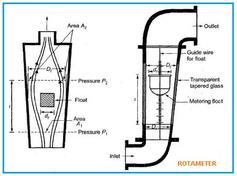Static Pressure vs. Dynamic Pressure: Key Differences
Advertisement
This article explores the concepts of static pressure and dynamic pressure, highlighting their differences and providing clear definitions. Pressure, in general, is defined as the force exerted by a fluid per unit area on a container’s wall. Let’s delve into the specifics of static and dynamic pressure.
Static Pressure
Definition
Static pressure refers to the pressure exerted by a fluid when it is in a state of equilibrium. This means the fluid isn’t moving or experiencing any net force causing it to flow. At any given point within the fluid, the pressure is identical in all directions and is independent of orientation. The term “static” here means “still” or “standing.”
Key Characteristics
- Directional Independence: Static pressure acts equally in all directions at a specific point.
- Equilibrium State: It’s associated with fluids at rest or in a state of equilibrium.
- Calculation: It can be expressed as the ratio of force to surface area:
Static Pressure = F/A
Units
- PSI (Pounds per Square Inch) - Usually measured relative to atmospheric pressure.
- MPa (Megapascal) - Measured relative to a vacuum.
Dynamic Pressure
Definition
Dynamic pressure arises when a pressure gradient exists within a fluid. This gradient prompts the fluid to flow from areas of high pressure to areas of low pressure in an attempt to restore equilibrium. Unlike static pressure, dynamic pressure is not independent of direction. The term “dynamic” refers to “moving.”
Key Characteristics
- Directional Dependence: Dynamic pressure is associated with the fluid’s motion and is dependent on the direction of flow.
- Fluid Flow: It occurs when there’s fluid movement, such as water flowing through a pipe.
- Kinetic Energy: It’s closely related to the kinetic energy of the fluid, representing the kinetic energy per unit volume.
- Moving Pressure: Often referred to as “moving pressure” due to its association with fluid motion.
Calculation
Dynamic pressure can be calculated using the following equation:
Dynamic Pressure = (ρ/2) * V^2
Where:
- ρ (rho) = Density of the fluid (kg/m³)
- V = Speed of the fluid (m/s)
Units
- Pascals (Pa)
Key Differences Summarized
| Feature | Static Pressure | Dynamic Pressure |
|---|---|---|
| Fluid State | Fluid in equilibrium, at rest or still | Fluid in motion or flow |
| Directionality | Independent of direction at a given point | Dependent on the direction of flow |
| Cause | Force per unit area exerted by the fluid when it is in equilibrium | Pressure gradient within the fluid prompting flow |
| Relationship | Associated with a fluid at rest | Represents kinetic energy per unit volume of fluid |
| Concept | ”Still” or “standing” pressure | ”Moving” pressure |
In essence, static pressure is the pressure exerted by a fluid when it’s at rest, while dynamic pressure is the pressure related to the fluid’s motion. Both pressures are crucial in understanding fluid dynamics and related engineering applications.
Advertisement
 T&M
T&M 







